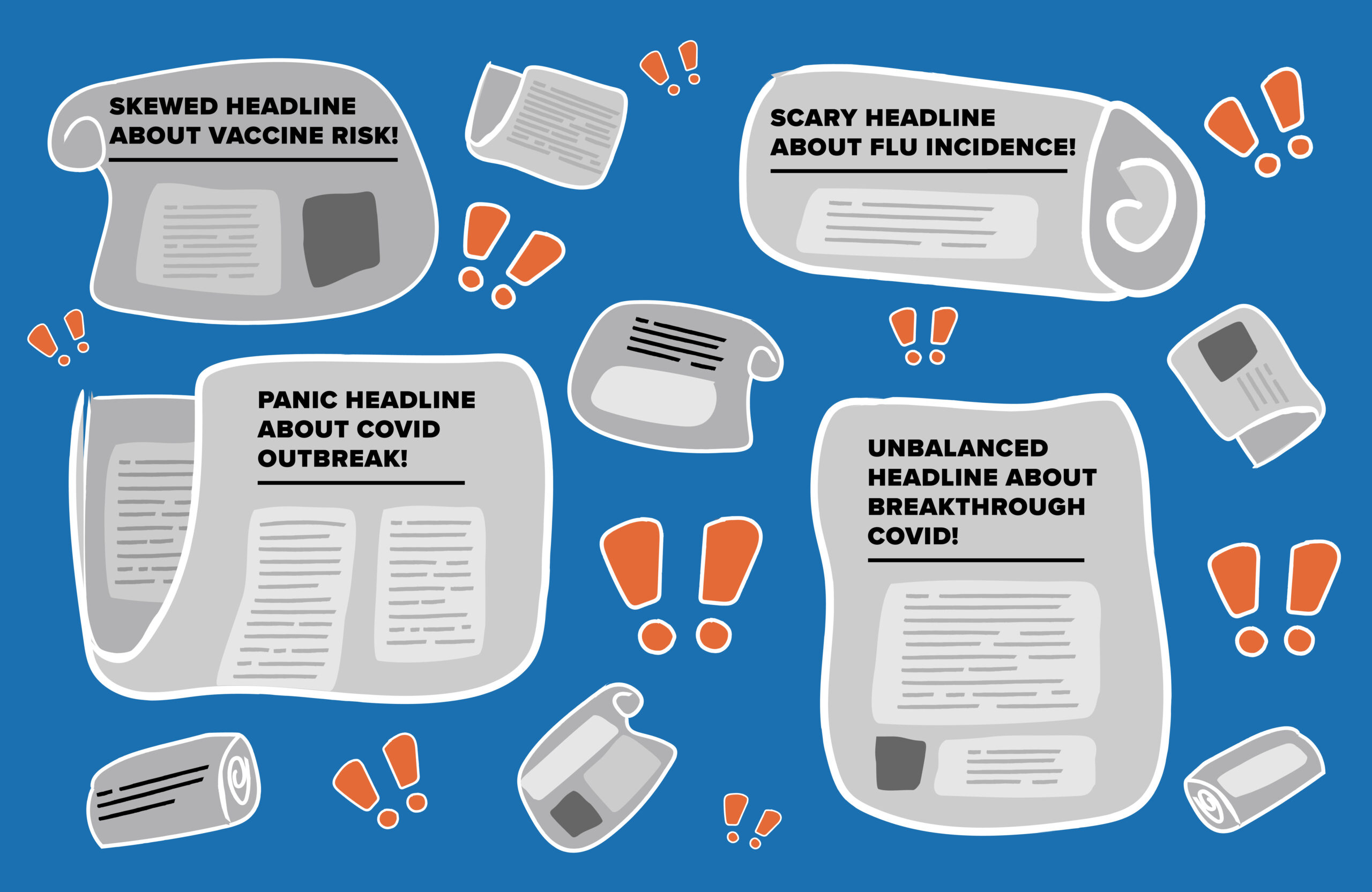Remember when the Yankees got sidelined at the start of the MLB season by a COVID outbreak, despite the team being fully vaccinated? The outbreak captured the attention of major news outlets, many of which published alarming headlines. For example, the Wall Street Journal’s headline read: “Baseball Has a High Vaccination Rate. It Still Hasn’t Been Able to Shut Down Outbreaks.” Like many people who call New York home, I paid close attention to the story and the news coverage, especially since the Yankees are my boyfriend’s favorite team of all time.
Unfortunately, a majority of the headlines failed to capture a critical point – eight of nine infected team members were asymptomatic, and only one coach was symptomatic — and just for a few days. The reason most of the team knew they were COVID-positive was because MLB and other professional sports rigorously test their players and team members. And yes, there were breakthrough infections, but the COVID-19 vaccines did exactly what they were supposed to do – protect against severe disease and death.
So why wasn’t the story more frequently framed as a vaccine success story? Why didn’t headlines underscore the relatively mild cases of COVID most of the Yankees had, attributing non-hospitalization to their vaccinated status? In my opinion, likely answers include media headlining norms and a desire to win eyeballs and clicks.
But with a pandemic like the one we continue to battle, context is critical. CNN’s headline was exemplary. It read: “New York Yankees’ breakthrough infections demonstrate the Covid-19 vaccine works. Here’s Why.” It went on to say, “Nine New York Yankees players or staff who were fully vaccinated caught Covid anyway. But that doesn’t mean people should be worried the vaccine doesn’t work….”
Fearmongering Undermines Trust in Science
News headlines have the power to fuel fear and hesitancy, especially since many readers simply scan their news and gravitate to the allure of clickbait. To me, the outbreak that befell the Yankees was a story of vaccine success. Not a single Yankee had to take the season off, not a single Yankee was out of commission for more than a week, and the team’s season continued as usual. But so little media coverage featured expert commentary on what would have happened had the Yankees NOT been vaccinated. I know, I looked for those stories and they didn’t get written or published with sufficient frequency.
MLB season is over, but COVID-related media headlines are still frequently painting only half the picture. While vaccinated people continue to be hospitalized or die due to breakthrough infections, media outlets should continually underscore that this population comprises a small amount of the vaccinated population. Headlines and media leads should be reinforcing that the unvaccinated population face a much higher risk of suffering complications or death from the virus. According to the CDC, the unvaccinated are 14 times more likely to die from the virus compared to the vaccinated. This message can’t be stated enough.
These types of omissions come with a high cost, as vaccination rates are directly linked to everyone’s health. Most people that are comfortable getting the COVID vaccine have been vaccinated, while hesitant segments remain hesitant. Reframing COVID stories like the Yankees outbreak as a public health “win” may have made a persuasive case for vaccination for the hesitant. Because people often latch onto stories and headlines that confirm their worst fears, balanced storytelling and media reportage is more important than ever.
And now with the rise of the Omicron variant, vaccine advances will become more urgent, as will headlines that preview balanced reporting. For most people, and not just baseball fanatics, the media is a trusted source for public health information and plays an incalculable role shaping our safety as the world works to contain the spread of COVID.
The Media are the Original Public Health Influencers
A 2019 study by the University of Pennsylvania Annenberg Public Policy Center found that negative media stories without appropriate context can undermine the public’s confidence in science. Headlines that over-generalize or place emphasis on the prevalence of problems in science led readers to believe that the health enterprise as a whole is broken. Such negativity or sensationalism is not helpful at a time when fostering trust in science is so fraught.
COVID breakthrough infections will continue to occur, and while some will sadly result in hospitalization and death, vaccines play a crucial role in lowering the fatality rate. A breakthrough case that results in a mild infection and allows a person to resume a normal life is a success story – and it’s the role of the media to report it that way.
How I wish that the much-shared stories of vaccinated ball players contracting COVID had been stories of how the team vaccination mandate saved the Yankees from a season of setbacks, severe illness or worse. The “show” went on, vaccines did their job, and that’s positive.
With the revised CDC recommendations on boosters, along with the discovery of the Omicron variant, we’re counting on news sources to deliver balanced, unskewed headlines that avoid sensationalism. As the original public health influencers, the media move minds, and shape our health future.


